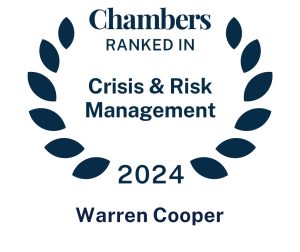You did your due diligence, got input from experts, crossed Ts, dotted Is and executed a perfect launch of that new technology/program/service line/product.
But as happens 25%-95% of the time — according to a professor at Harvard Business School and studies at the Massachusetts Institute of Technology (MIT) — it flopped.
Failure has a variety of consequences that range from significant costs (Bell Telephone lost half a billion dollars launching the Picturephone in the 1960s) to damaging the brand (think New Coke at the end of the 20th Century) to tanking the enterprise altogether (too many to mention).
Among the things these failures have in common is the need to communicate to internal and external stakeholders what happened and why, who’s responsible and what’s being done to ensure it won’t happen again (aside from ditching the CEO/Board Chair).
Here are five communications tips that can minimize blowback.
1. Own it: Acknowledge the outcome promptly and transparently
-
- Act quickly. As soon as it becomes clear that the launch failed or led to unintended negative consequences, leadership should inform the full range of employees (those close to the launch already know) and, as appropriate, external stakeholders — ideally before they learn it on their own.
- Be frank and fully engaged. Avoid minimizing the situation, casting blame or deflecting by pointing to technicalities (e.g., “the idea seemed right at the time.”)
Example: “It’s clear that the outcome did not meet expectations. I want to acknowledge that directly and take responsibility for the result.”
2. Don’t dodge: Explain without making excuses
-
- Seek to reinforce your integrity and decision-making process. Especially now that it’s obvious the outcome wasn’t what you anticipated.
- Offer a clear, concise explanation. Share the reasoning and the data that led to the decision.
- Identify assumptions and known risks. Be clear that the assumptions turned out to be wrong and/or known, or that suspected risks actually materialized.
Example: “When I recommended the launch, I based the decision on X and Y, assuming that Z would stay unchanged. I did not fully appreciate how significantly a change in Z would affect the outcome.”
3. Pivot: Shift focus from failure to solution
-
- Share plans for corrective action. Be ready to present alternative strategies or mitigation efforts.
- Commit to the organization’s success. Take the lead in the effort to solve the problem or resolve the emerging negative concerns, while expressing openness to others’ input.
Example: “Here are a few corrective steps I intend to implement immediately, based on what we know now. I look forward to working closely with you to reset and I welcome your input as we strive to regain momentum.”
4. Look backward to go forward: Share lessons learned
-
- Be clear about went wrong. Internally (and potentially with outside stakeholders), conduct a retrospective analysis to identify what might have been done differently, and what predictive information was overlooked or missed.
- Be direct about how the experience will inform future efforts or decision-making.
Example: “It’s clear we need a better approach to stress-testing assumptions. Going forward, I’ll seek to build deeper and wider analysis into forecasts and strategic decisions.”
5. Lean on character: Act with integrity to renew trust
-
- How leaders handle adversity shapes team members’ respect as much as successes.
- Deepen trust and respect by delivering forthright and solutions-based communications, especially when acknowledging and addressing a misstep.
Example: “I’m dedicated to our organization’s success, and I’m committed to helping the organization weather this storm, move past it and regain our leadership role in this space. I know I can rely on your professionalism to fully support us as we undertake the changes we now recognize must be made.”
Whether verbalized or not, everyone on your team knows that initiatives aimed at growth and change contain both uncertainty and some degree of risk. What your people value most is leadership that demonstrates judgment, transparency, accountability and a commitment to straightforward communications.
When a well-supported decision turns out to be a wrong move, the quality of your communications can preserve and even strengthen the trust in leadership organizations need for continued success.










